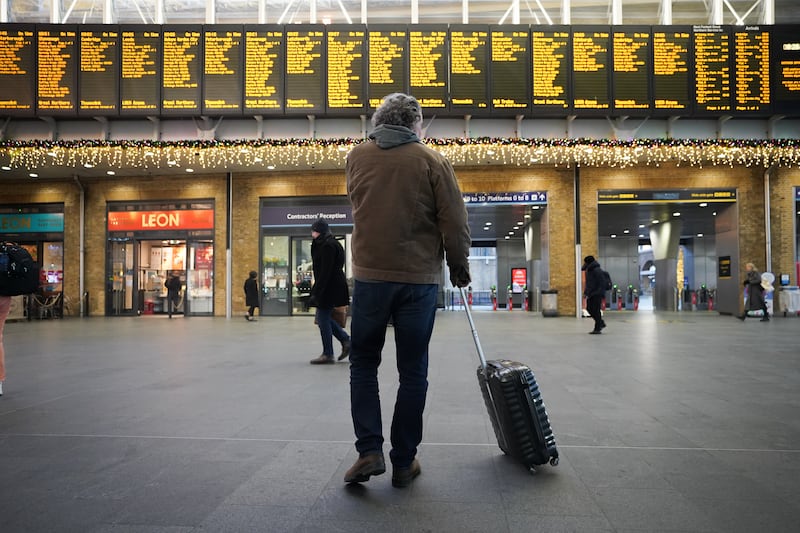The recent announcement at G20 of a trade agreement that will link Europe, the Middle East and India by rail and sea has excited not just economists and politicians but also train enthusiasts.
The idea of connecting continents by rail has long been proposed but only occasionally realised in practice.
For the Middle East, the proposed new trade corridor will almost certainly incorporate some version of the Gulf Railway, intended to connect Kuwait to Muscat on a single line, although significant progress on the project has been made only in the UAE.
As always, these grand transport visions have to overcome political and technical difficulties, from crossing countries plagued by war, to the simple problem of tracks being of different widths.

Connecting the world
Under the G20 agreement, the Gulf railway network could eventually extend beyond the GCC countries to Europe and cities such as London and Paris, although the civil war in Syria rules out that direction for the moment, while Iraq’s political instability makes the prospect of immediate infrastructure projects unlikely.
Similar challenges ended what would have been arguably the greatest railway project of them all, from Cairo and the shores of the Mediterranean to Cape Town in South Africa, a distance of about 10,000km.
The Cairo to Cape Railway was proposed by Cecil Rhodes, the architect of the British Empire in Africa at the end of the 19th century. Britain at the time controlled or ruled territories in a vast corridor that stretched almost the entire length of the continent.

Almost, but not all. The way was blocked by German East Africa, a colony that now includes present-day Burundi, Rwanda and Tanzania. The Germans were in no rush to help Britain’s colonial ambitions by allowing a railway, but when they were finally driven out during the First World War, momentum had been lost and the project was abandoned.
Trans-Siberian Railway
But one of the greatest railway projects was completed at the same time. The Trans-Siberian Railway runs for more than 9,000km, connecting Europe with Asia and the Pacific Ocean, yet travels within the borders of only one country – Russia.
Construction began in 1891 and was largely finished by 1904. Today the railway has several routes, crossing eight time zones and taking about a week to complete.
At the Chinese city of Erenhot, lines connect with the Trans-Mongolian Railway, another 2,200km of track that link Moscow and Beijing. Another line runs 600km from North Korea to Vladivostok, the eastern terminus of the Trans-Siberian Railway.
Although rarely used, this was how North Korea’s leader Kim Jong-un travelled in his luxury armoured train for his summit with President Vladimir Putin this week.

Differing specifications
One obstacle, though, needs to be overcome on the otherwise seamless journey between Moscow and Beijing. Russian trains run on rails that are 1.52m apart, a gauge adopted under the tsars.
China uses the standard gauge of 1.435m, first used by Britain as a pioneer of railways. In order to proceed, trains in both directions must switch their wheels, known as bogies, at the border, by lifting carriages, a process which takes five hours.
With more than half the world’s railways and most high-speed lines outside Russia using standard gauge, this is not generally a problem with long distance rail travel.
Even on non-designated routes, distances of many thousands of kilometres are possible. For rail enthusiasts, the holy grail is a 18,755km journey from Lagos in western Portugal to Singapore.
Billed as the world’s longest passenger journey, this trips takes passengers through 13 countries, and became possible only with the opening of a new line connecting Laos with China and Thailand in 2021.
Unfortunately, the war in Ukraine renders travelling from Europe to Russia using the Trans-Siberian Express impossible at present.
Mauritania Railway
For the truly adventurous, there is the Mauritania Railway, a single track that runs 704km through the Sahara from the iron ore mines at Zouerat to the Atlantic port of Nouadhibou.
Trains up to three kilometres long take 20 hours to complete the journey, with hitchhikers often riding on top of the piles of ore for a free ride. At the end of the 200 wagons a passenger carriage is attached, for which a one-way ticket costs €6 ($6.44)
The route from the Chinese city Yiwu to Europe, billed as a 21st-century Silk Road or the New Eurasian Land Bridge, is strictly freight only.
Operations began in 2014 on the line to Madrid, taking shipping containers 13,000km on the world’s longest freight route. In 2017, the line reached the UK, a distance of 12,000km that uses the Channel Tunnel to reach the terminal in east London.
Although the journey takes about 18 days, and requires cargo to be reloaded several times, it is still several weeks shorter than moving the containers by sea.
For those who dream of the ultimate long-distance train journey, there is still one, great, unrealised project. The Intercontinental Railway is the vision of a group of enthusiasts whose passion is hampered only by a lack of financing, engineering techniques and political will.
It would involve more than 5,000km of new track and a rail tunnel from Russia to the United States under the Bering Strait to Alaska, where the distance between Asia and North America is only 82km at the strait's narrowest point.
Conservatively priced at more $100 million, it would theoretically make it possible to travel from Paris to New York overland on a single train journey of more than 16,000km. In theory at least. Due to the current state of US relations with Russia, this dream trip will most likely remain permanently unrealised.







